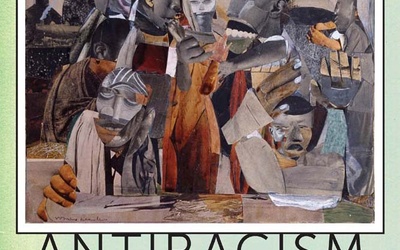Asianismo, a term derived from the Spanish word “Asiano” meaning Asian, is a philosophical and political movement that emphasizes the cultural, economic, and political unity of the Asian continent. This ideology has its roots in the 19th century and has played a significant role in shaping the course of history, particularly in Asia.
The Rise of Asianismo in the 19th Century

In the 19th century, Asia was largely under the control of European colonial powers. The exploitation and subjugation of Asian peoples by these colonial powers led to a growing sense of resentment and a desire for self-determination. This sentiment was further fueled by the humiliation suffered by China during the Opium Wars and the Boxer Rebellion, as well as the marginalization of other Asian nations by the West.
The Emergence of Pan-Asianism
One of the earliest proponents of Asianismo was the Japanese thinker Okakura Tenshin, who advocated for the cultural and spiritual unity of Asia. His ideas were echoed by other intellectuals, such as the Indian philosopher Aurobindo Ghose and the Filipino writer José Rizal. These thinkers emphasized the shared cultural heritage and values of Asian nations, and called for a united front against Western imperialism.
The Growth of Nationalist Movements
The rise of Asianismo coincided with the growth of nationalist movements across Asia. Figures such as Sun Yat-sen in China, Mahatma Gandhi in India, and Sukarno in Indonesia championed the cause of independence and self-governance. These leaders drew inspiration from the ideals of Asianismo, which provided a unifying platform for the diverse Asian nations to come together in their struggle against colonial rule.
The Impact of World War II
World War II had a profound impact on the development of Asianismo. The Japanese occupation of large swaths of Asia during the war was initially seen as a potential vehicle for the realization of Asian unity. However, the brutal treatment of occupied territories by the Japanese forces led to widespread resentment and a backlash against the idea of Pan-Asianism as envisioned by Japan.
Asianismo and the End of Colonialism

After World War II, the wave of decolonization swept across Asia, with nations such as India, Indonesia, and Vietnam gaining independence. The ideals of Asianismo played a crucial role in galvanizing support for the anti-colonial struggle and fostering a sense of shared identity among the newly independent nations.
The Bandung Conference
In 1955, the Bandung Conference was held in Indonesia, bringing together leaders from 29 Asian and African nations. This conference was a pivotal moment in the history of Asianismo, as it laid the foundation for the Non-Aligned Movement and solidified the commitment of Asian nations to work together towards common goals.
The Formation of Regional Organizations
The post-colonial era saw the formation of various regional organizations, such as the Association of Southeast Asian Nations (ASEAN) and the South Asian Association for Regional Cooperation (SAARC). These organizations were heavily influenced by the principles of Asianismo, emphasizing regional cooperation, economic integration, and the promotion of shared cultural values.
The Rise of Asian Economic Powers
The latter half of the 20th century witnessed the rapid economic development of several Asian nations, including Japan, South Korea, Taiwan, and later China. This economic success was often attributed to the shared cultural values and work ethic that characterized many Asian societies, further reinforcing the ideals of Asianismo.
Asianismo and the Rise of the Non-Aligned Movement

The Non-Aligned Movement (NAM) was born out of the desire of newly independent nations to chart their own course, free from the influence of the major power blocs of the Cold War era. Many Asian nations, such as India, Indonesia, and Yugoslavia, were at the forefront of this movement, drawing inspiration from the principles of Asianismo.
The Bandung Principles
The Bandung Conference laid down ten key principles, known as the Bandung Principles, which served as the foundation for the Non-Aligned Movement. These principles included respect for sovereignty and territorial integrity, non-interference in internal affairs, and the promotion of mutual interests and cooperation.
The Role of Asian Nations in the NAM
Asian nations played a pivotal role in the Non-Aligned Movement, with leaders such as Jawaharlal Nehru of India and Sukarno of Indonesia being among the movement’s most prominent figures. The NAM provided a platform for Asian nations to assert their independence and to promote their shared interests on the global stage.
The Impact of the NAM on Global Politics
The Non-Aligned Movement had a significant impact on global politics during the Cold War era. It challenged the bipolar world order and provided a third way for nations to navigate the complex geopolitical landscape. The movement also played a crucial role in supporting various liberation struggles and promoting the principles of self-determination and non-interference.
Asianismo and Economic Development

Asianismo has played a significant role in shaping the economic development strategies of many Asian nations. The shared cultural values and work ethic that characterize many Asian societies have been cited as contributing factors to the economic success of these nations.
The Asian Tigers
The rapid economic growth experienced by the “Asian Tigers” – South Korea, Taiwan, Hong Kong, and Singapore – in the latter half of the 20th century was often attributed to the shared cultural values and work ethic that characterized these societies. The emphasis on education, discipline, and hard work was seen as a manifestation of Asianismo.
The Rise of China
China’s remarkable economic transformation in the late 20th and early 21st centuries has been a defining moment for Asianismo. China’s economic success has been widely viewed as a validation of the Asian development model, which emphasizes strong state intervention, export-oriented industrialization, and the prioritization of economic growth.
Regional Economic Integration
Asianismo has also been a driving force behind various regional economic integration initiatives, such as the ASEAN Economic Community (AEC) and the Regional Comprehensive Economic Partnership (RCEP). These initiatives aim to enhance economic cooperation and integration among Asian nations, with the goal of creating a more prosperous and competitive region.
Asianismo and Environmentalism
In recent decades, Asianismo has also been closely linked with the environmental movement, as many Asian nations grapple with the challenges posed by environmental degradation, climate change, and the need for sustainable development.
Traditional Asian Values and Environmentalism
Many traditional Asian values and philosophies, such as Taoism, Buddhism, and Hinduism, emphasize the importance of living in harmony with nature and respecting the environment. These values have been incorporated into the broader discourse of Asianismo, with proponents arguing for a more sustainable and environmentally-conscious approach to development.
The Role of Asian Nations in Climate Change Negotiations
Asian nations have played an increasingly prominent role in international climate change negotiations and efforts to address global environmental challenges. Countries like China and India, as major greenhouse gas emitters, have been at the forefront of these discussions, advocating for a more equitable and sustainable global environmental framework.
Asianismo and Sustainable Development
Asianismo has also been closely linked with the concept of sustainable development, which seeks to balance economic growth with environmental protection and social equity. Many Asian nations have embraced sustainable development strategies that draw upon traditional Asian values and principles, such as the emphasis on harmony, balance, and respect for nature.
Asianismo and the Role of Religion
Religion has played a significant role in shaping the cultural and philosophical foundations of Asianismo. Many of the major religions of Asia, such as Buddhism, Hinduism, Taoism, and Confucianism, have contributed to the development of this ideology.
The Influence of Buddhism
Buddhism, with its emphasis on non-violence, compassion, and the interconnectedness of all things, has had a profound impact on the development of Asianismo. Buddhist principles, such as the concept of the Middle Way, have been incorporated into the broader discourse of Asianismo, promoting moderation and balance in all aspects of life.
The Role of Hinduism
Hinduism, with its rich philosophical traditions and emphasis on spirituality, has also contributed to the development of Asianismo. Concepts such as “Vasudhaiva Kutumbakam” (the world is one family) and the idea of “Dharma” (righteous duty) have been embraced by proponents of Asianismo as guiding principles for promoting unity and ethical conduct.
The Influence of Taoism and Confucianism
In East Asia, the philosophical traditions of Taoism and Confucianism have played a significant role in shaping the cultural and intellectual foundations of Asianismo. The Taoist emphasis on harmony with nature and the Confucian principles of filial piety, respect for elders, and social order have resonated with the ideals of Asianismo.
Asianismo and Cultural Identity
Asianismo has been closely linked with the preservation and promotion of Asian cultural identity inthe face of globalization and Western cultural dominance. Many proponents of Asianismo argue that embracing and celebrating one’s cultural heritage is essential for maintaining a sense of identity and pride in an increasingly interconnected world.
Cultural Heritage Preservation
One of the key aspects of Asianismo is the preservation of cultural heritage, including traditional arts, crafts, languages, and customs. Many Asian nations have made efforts to safeguard and promote their cultural traditions as a way of asserting their unique identities and resisting cultural homogenization.
- Example: Japan’s efforts to preserve its traditional arts such as tea ceremony, ikebana (flower arranging), and kabuki theater are not only aimed at keeping these art forms alive but also at showcasing Japan’s rich cultural heritage to the world.
- Example: India’s promotion of classical dance forms like Bharatanatyam, Kathak, and Odissi is not only a means of artistic expression but also a way of preserving and passing on centuries-old cultural traditions to future generations.
Cultural Exchange and Collaboration
Asianismo has also led to increased cultural exchange and collaboration among Asian nations, fostering mutual understanding and appreciation of each other’s traditions. Events such as cultural festivals, art exhibitions, and music concerts serve as platforms for sharing and celebrating the diversity of Asian cultures.
- Example: The ASEAN Cultural Heritage Digital Archive project, initiated by Southeast Asian nations, aims to digitize and preserve the region’s cultural heritage, making it accessible to a wider audience and promoting cross-cultural dialogue.
- Example: The Silk Road International Film Festival, which brings together filmmakers from countries along the historic Silk Road, promotes cultural exchange and cooperation through cinema, showcasing the diverse narratives and storytelling traditions of Asia.
Cultural Diplomacy
Asianismo has also influenced the practice of cultural diplomacy, where cultural exchanges and collaborations are used as tools to enhance diplomatic relations and promote soft power. Asian nations often leverage their cultural assets, such as cuisine, literature, and performing arts, to build bridges with other countries and showcase the richness of Asian culture.
- Example: South Korea’s “Korean Wave” or Hallyu, which refers to the global popularity of Korean pop culture, including K-pop music, Korean dramas, and films, has been instrumental in enhancing South Korea’s soft power and cultural influence around the world.
- Example: Japan’s government-sponsored programs like the Japan Exchange and Teaching (JET) Program, which brings foreign language teachers to Japan, and the Cool Japan initiative, which promotes Japanese pop culture overseas, are aimed at fostering cultural ties and promoting a positive image of Japan abroad.
Asianismo and Human Rights
The promotion and protection of human rights have been central to the ideology of Asianismo, with many Asian nations advocating for a more inclusive and rights-based approach to governance and development. However, the concept of human rights in the Asian context is often framed within the context of cultural relativism and national sovereignty.
Cultural Relativism and Human Rights
Asianismo emphasizes the importance of respecting cultural diversity and local values when addressing human rights issues, arguing that universal human rights norms should be applied in ways that are sensitive to the cultural contexts of Asian societies. This approach seeks to strike a balance between upholding fundamental rights and acknowledging the cultural specificities of different communities.
- Example: In debates over freedom of expression, some Asian countries have called for restrictions on hate speech or content that may incite religious or ethnic tensions, citing the need to maintain social harmony and respect for diverse beliefs.
- Example: The concept of collective rights, which prioritizes the well-being of the community over individual freedoms, is often invoked in Asian discourse on human rights, reflecting a communitarian approach to governance and social welfare.
National Sovereignty and Human Rights
Asianismo also places a strong emphasis on national sovereignty and non-interference in internal affairs, viewing external interventions in the name of human rights as a form of neo-colonialism or cultural imperialism. Many Asian nations advocate for a principle of “Asian values” that prioritize stability, order, and social harmony over individual liberties.
- Example: China’s stance on human rights issues, such as its treatment of ethnic minorities in Xinjiang and Tibet, is often framed as an internal matter that falls within the purview of national sovereignty, rejecting external criticisms as interference in China’s domestic affairs.
- Example: Singapore’s model of governance, which combines economic prosperity with strict social control, is justified on the grounds of maintaining public order and social cohesion, even if it involves restrictions on civil liberties and political freedoms.
Human Rights Challenges in Asia
Despite the principles of Asianismo, many Asian countries continue to face significant human rights challenges, including issues related to freedom of expression, political dissent, minority rights, and gender equality. Balancing the imperatives of economic development, social stability, and human rights remains a complex and ongoing struggle for many Asian societies.
- Example: The Rohingya crisis in Myanmar, where the military’s persecution of the Rohingya Muslim minority has led to widespread displacement and human rights abuses, highlights the challenges of protecting minority rights in ethnically diverse societies.
- Example: The crackdown on pro-democracy activists in Hong Kong, following the imposition of the National Security Law by China, raises concerns about the erosion of civil liberties and political freedoms in the territory, despite international calls for upholding human rights standards.
The Future of Asianismo
As we look to the future, the ideology of Asianismo is likely to continue shaping the political, economic, and cultural landscape of Asia and beyond. With the rise of Asia as a global powerhouse and the increasing interconnectedness of Asian nations, the principles of Asianismo will play a crucial role in defining the region’s identity and aspirations.
Asianismo in a Multipolar World
In an increasingly multipolar world, where power is distributed among multiple centers of influence, Asianismo offers a vision of solidarity and cooperation among Asian nations to navigate the complexities of global politics. By emphasizing shared values, interests, and histories, Asianismo provides a framework for building partnerships and alliances that transcend traditional geopolitical divides.
Economic Resilience and Sustainability
The economic success of Asian nations, coupled with growing concerns about environmental sustainability and social inequality, will shape the future trajectory of Asianismo. As Asian countries seek to balance economic growth with environmental protection and social equity, the principles of Asianismo will guide efforts to create a more resilient, inclusive, and sustainable development model.
Cultural Innovation and Exchange
The promotion of cultural diversity, creativity, and innovation will be central to the future of Asianismo, as Asian nations harness their cultural heritage to drive social progress and economic growth. By investing in the arts, education, and cultural industries, Asian countries can foster a vibrant creative economy that celebrates the richness and diversity of Asian cultures.
Human Rights and Social Justice
Advancing human rights, social justice, and inclusive governance will remain key challenges for Asianismo in the future. As Asian societies grapple with issues of political freedom, minority rights, and gender equality, the principles of Asianismo will be tested in their ability to reconcile competing priorities and values while upholding the dignity and rights of all individuals.
Global Leadership and Cooperation
As Asia assumes a greater role in global affairs, the principles of Asianismo will guide the region’s engagement with the international community and its pursuit of common goals and interests. By championing multilateralism, dialogue, and cooperation, Asian nations can shape a more inclusive, equitable, and peaceful world order that reflects the values and aspirations of Asianismo.
Conclusion
In conclusion, Asianismo represents a multifaceted ideology that encompasses political, economic, cultural, and ethical dimensions, reflecting the diverse experiences and aspirations of Asian societies. As Asia continues to rise as a global force, the principles of Asianismo will play an increasingly important role in shaping the region’s identity, relationships, and future trajectory. By embracing the values of solidarity, diversity, and sustainability, Asian nations can forge a path towards a more prosperous, harmonious, and inclusive future for all.


